Wednesday, 3 December 2025
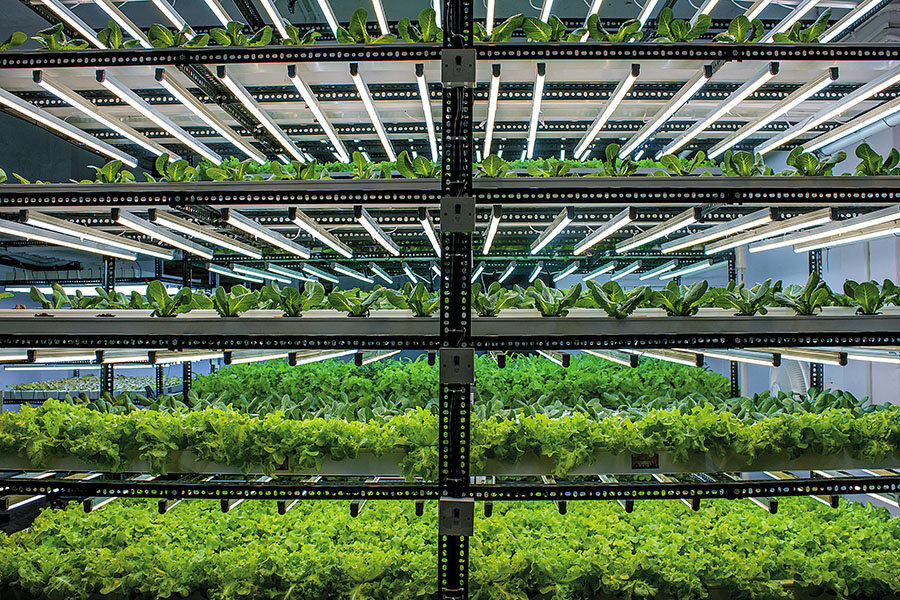
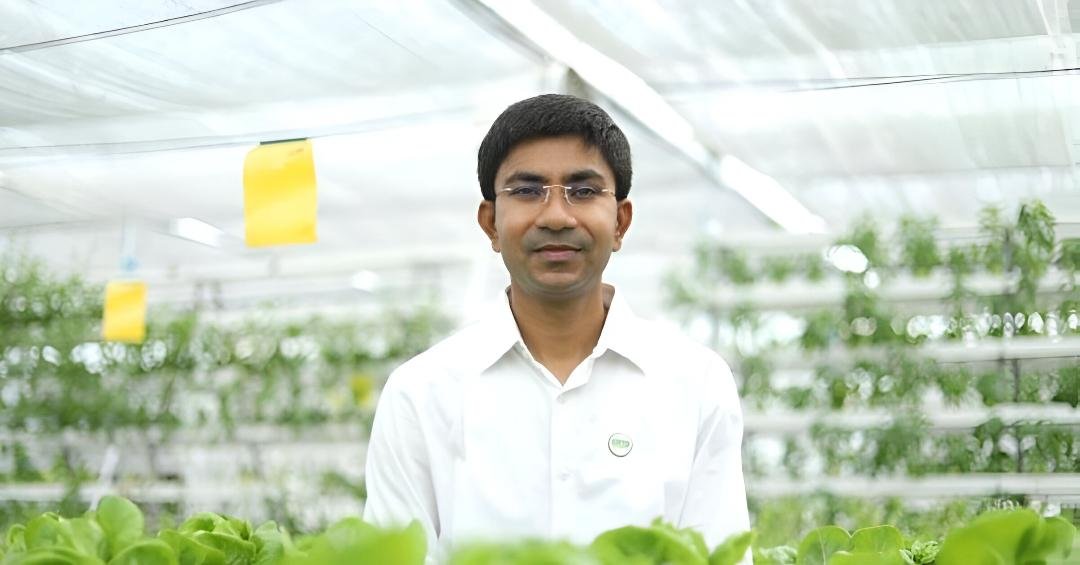
In this exclusive AgroSpectrum interview, Pravin Patel, Founder of Brio Hydroponics, shares how the Unnati project—a 100-acre hydroponics park in Gujarat—is poised to transform Indian agriculture from niche experimentation to mainstream, climate-smart farming. Patel discusses how Brio’s pioneering Controlled Environment Agriculture (CEA) system combines global technology with local adaptation to deliver year-round, resource-efficient, high-quality produce.
He highlights how Unnati not only boosts profitability for investors and farmers but also serves as a training and technology hub, enabling knowledge transfer across the country. The conversation underscores hydroponics’ potential to address climate volatility, water scarcity, and food security while creating scalable, modular solutions for smallholder farmers. Brio’s vision, Patel notes, is to position India as a global leader in sustainable agriculture by 2035, setting new benchmarks for innovation, exports, and farmer-first growth.
Redefining Indian Agriculture: From Niche to Mainstream
Hydroponics in India is still seen as niche compared to traditional farming. With the launch of Unnati, a 100-acre park, how do you see this project shifting perceptions—and what does it mean for the mainstreaming of soil-less farming in India?
Hydroponics in India has traditionally been viewed as an expensive, niche technology primarily suited for urban enthusiasts and high-end commercial ventures. This perception stems from several factors: limited awareness among farmers, high initial capital requirements, and the dominance of traditional soil-based farming practices that have sustained Indian agriculture for millennia. However, this narrative is rapidly changing as water scarcity, climate volatility, and declining soil health create urgent demands for innovative agricultural solutions.

Unnati as a Catalyst for Change
The launch of Unnati, Brio Hydroponics’ 100-acre park in Talod, Sabarkantha district, represents a strategic inflection point in shifting perceptions around soil-less farming. By demonstrating hydroponics at commercial scale rather than experimental plots, Unnati addresses the primary skepticism around scalability and economic viability. The project’s scale brings multiple advantages: economies of production, market dominance in premium fresh produce categories, and the ability to showcase consistent, high-quality output regardless of seasonal variations.
Pravin Patel, Founder of Brio Hydroponics, emphasizes that “Unnati is not just a park; it’s a movement towards climate-smart agriculture. By integrating our CEA system with global best practices, we aim to liberate farmers from weather uncertainties”. This positioning transforms hydroponics from a technology solution to a comprehensive agricultural philosophy that prioritizes sustainability, predictability, and profitability.
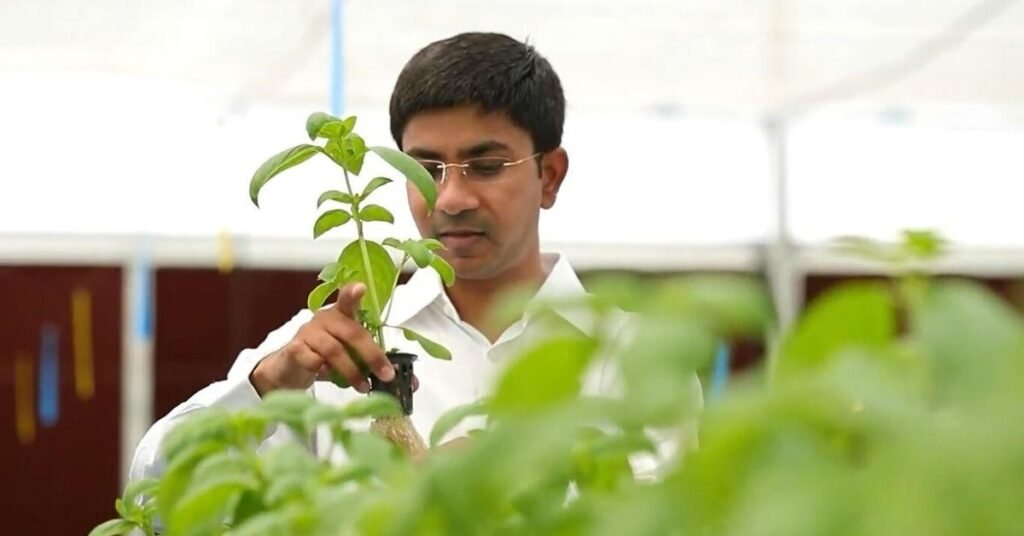
Structural Changes Driving Adoption
Several structural factors are accelerating the mainstream adoption of hydroponics in India. First, the increasing urbanization and growing middle-class demand for pesticide-free, fresh produce creates robust market pull. Second, government policy support through initiatives like the National Horticulture Mission and subsidies covering up to 50 per cent of hydroponic capital costs lower entry barriers. Third, the integration of digital technologies—IoT sensors, automated nutrient delivery, and AI-driven monitoring—makes hydroponic systems more accessible to farmers who previously lacked technical expertise.
The Indian hydroponics market is projected to grow from $ 263.1 million in 2024 to $ 2,227 million by 2035, reflecting a robust CAGR of 21.43 per cent. This explosive growth trajectory indicates that hydroponics is transitioning from experimental technology to mainstream agricultural practice, driven by both necessity and opportunity.
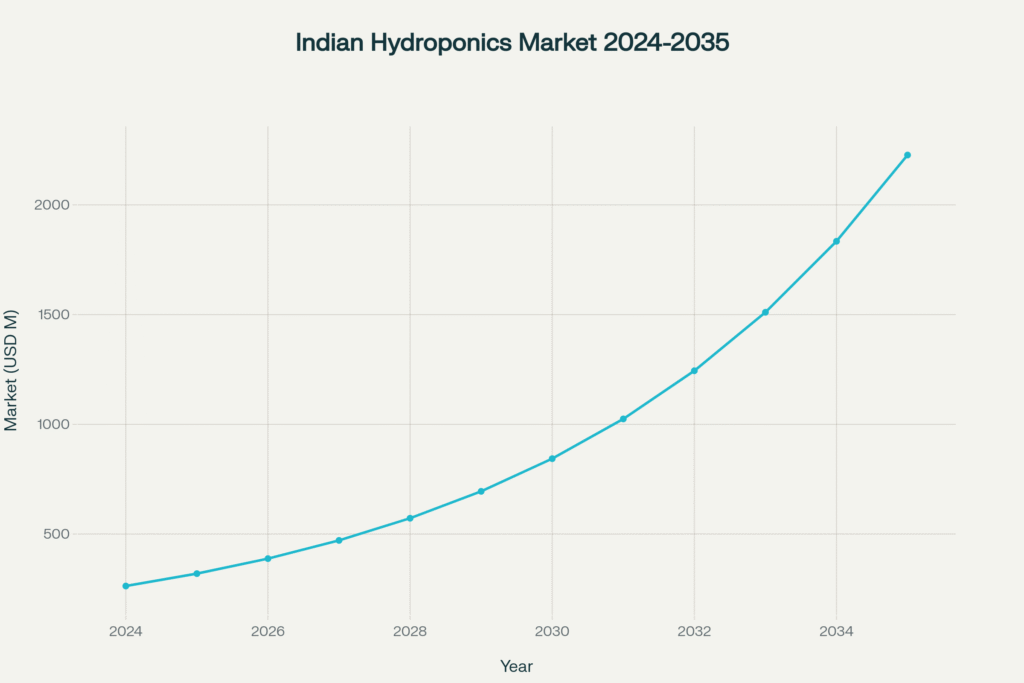
Indian Hydroponics Market Growth Projection (2024-2035) showing explosive growth from $ 263.1 million to $ 2,227 million with 21.43 per cent CAGR
From Innovation to Scale: Deploying Breakthrough CEA Technology
Brio pioneered the world’s first Controlled Environment Agriculture (CEA) system. How does Unnati deploy this breakthrough differently, and what scale efficiencies can it unlock for India’s agriculture economy?
Brio Hydroponics has pioneered the world’s first Controlled Environment Agriculture (CEA) system, which represents a fundamental breakthrough in precision farming technology. Unlike conventional hydroponics that focuses primarily on soil-less cultivation, Brio’s CEA system integrates multiple environmental variables—temperature, humidity, CO₂ concentration, light spectrum, airflow, and nutrient delivery—into a unified, automated platform that optimizes plant growth at every stage.
The CEA system deployed at Unnati differs significantly from traditional greenhouse operations. It incorporates global technologies sourced from France, Israel, and New Zealand, specifically adapted for Indian climatic conditions. These technologies include advanced automated irrigation systems, sophisticated climate control mechanisms, and precision nutrient delivery systems that work in harmony to maintain optimal growing conditions throughout the year, irrespective of external weather fluctuations.
Scale Efficiencies and Economic Impact
Unnati’s 100-acre scale unlocks multiple efficiency advantages that smaller hydroponic operations cannot achieve. The infrastructure supports 100 individual hydroponic structures of one acre each, creating an industrial-grade production ecosystem. This scale enables bulk procurement of inputs, standardized operational procedures, and centralized processing and distribution systems that dramatically reduce per-unit production costs.
The economic benefits extend beyond cost reduction to revenue optimization. Unnati’s strategic tie-ups with retailers, e-commerce platforms, and export channels ensure that produce reaches premium markets quickly and at optimal pricing. The park’s integrated business model projects Internal Rate of Return (IRR) between 18-24 per cent annually, making it attractive for both institutional and retail investors.
Scale efficiencies also manifest in technology deployment and maintenance. Centralized monitoring systems can oversee multiple growing units simultaneously, reducing labor requirements while improving precision. Automated systems for irrigation, nutrient dosing, and climate control operate more efficiently when managing larger volumes, creating economies of scale that make the technology economically viable for broader adoption.
Technology Transfer and Knowledge Creation
Beyond immediate production benefits, Unnati serves as a technology transfer hub that demonstrates how advanced CEA systems can be replicated across different regions and scales. The project’s success in its initial 30 acres under cultivation provides concrete evidence of technology viability, yield improvements, and economic returns that can be communicated to potential adopters.
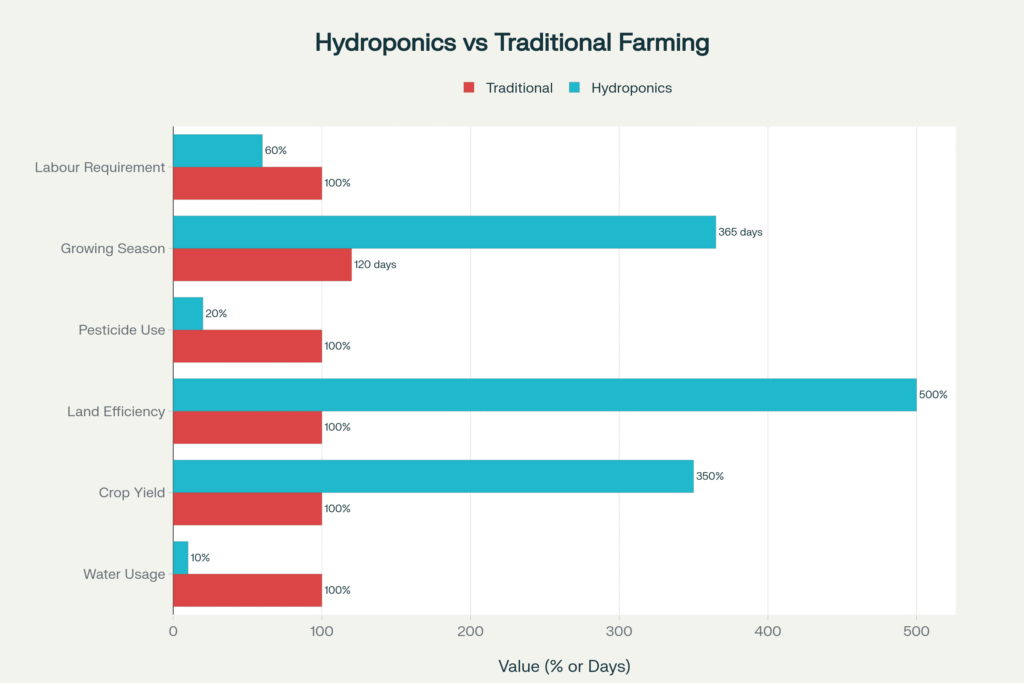
Brio’s Center of Excellence in Gandhinagar has already trained over 500 agripreneurs, significantly enhancing agricultural skills and creating a knowledge ecosystem around hydroponic farming. This knowledge creation function becomes even more critical at Unnati’s scale, where the park can serve as a demonstration site for farmers, investors, and policymakers to observe commercial-scale hydroponic operations.
Hydroponics vs Traditional Farming: Key Performance Metrics Comparison showing revolutionary improvements in resource efficiency
Investor Confidence in Agri-Tech: Making Hydroponics Profitable and Attractive
Your early investors highlight transparency, trust, and strong returns as key drivers. How do you make hydroponics, traditionally a capital-intensive venture, both profitable and attractive for institutional and retail investors in India?
Hydroponics has traditionally been perceived as a capital-intensive venture with uncertain returns, creating significant barriers for both institutional and retail investors. Brio Hydroponics addresses this challenge through multiple innovative approaches that transform the investment proposition from high-risk speculation to predictable, asset-backed returns.
The company’s fintech investment platform, launched in 2024, represents India’s first digital fixed-return investment platform specifically tailored for the Controlled Environment Agriculture sector. This platform offers investors fixed, assured returns of up to 18 per cent per annum, exemplified by an investment of Rs 10 lakhs yielding Rs 1.8 lakhs annually. The platform has rapidly gained traction, attracting over 125 investors and demonstrating robust confidence in sustainable agricultural practices.
Transparency and Trust Mechanisms
Investor confidence in Brio Hydroponics stems from the company’s commitment to transparency, professional execution, and proven track record. Rajesh Mehta, an Unnati investor, states: “What I value most is trust and assurance. Brio Hydroponics has consistently delivered both with professionalism, transparency, and a proven track record that gave me complete confidence”. This trust is built through several mechanisms:
Performance Reporting: Regular performance reports and transparent financial disclosures provide investors with real-time insights into their investments. A dedicated investor dashboard offers continuous visibility into farm operations, yield data, and financial performance, fostering trust and ongoing engagement.
Agri-Partnership Model: The alignment of investor returns with farm performance ensures that both parties are motivated to achieve excellence in agricultural productivity. This partnership approach transforms investors from passive capital providers to active stakeholders in agricultural success.
Proven Track Record: Brio’s successful hydroponics projects for major corporate clients including Welspun Group and Adani Group demonstrate the company’s capability to execute large-scale, complex agricultural projects.
Risk Mitigation and Return Optimization
The Unnati model incorporates several risk mitigation strategies that make hydroponics attractive for institutional and retail investors. The cluster-based farming system managed by seasoned professionals at Brio Hydroponics reduces operational risks while ensuring consistent quality and output. Climate-controlled environments eliminate weather-related crop losses, while integrated pest management systems minimize disease and pest risks.

Market risk is addressed through diversified crop portfolios focusing on premium categories such as leafy greens, herbs, and exotic vegetables that command higher prices and have growing demand in urban markets. Strategic partnerships with retailers and export channels provide assured market access and pricing stability.
The company’s ambitious target to raise Rs 100 crores through its investment platform within the first year demonstrates significant investor appetite for structured agri-tech investments. This capital will support the development of additional hi-tech farming projects across India, creating a scalable model for sustainable agriculture investment.
Climate and Food Security: Addressing India’s Dual Challenge
Climate and Food Security: You’ve often spoken about freeing farmers from weather uncertainty. How can hydroponics-based systems like Unnati address India’s dual challenge of climate volatility and food security—and is there a risk of this becoming a solution only for high-value crops rather than staples?
India’s agricultural sector faces unprecedented challenges from climate volatility, with erratic rainfall patterns, prolonged droughts, and extreme weather events becoming increasingly common. Traditional farming methods, dependent on monsoon cycles and seasonal patterns, leave farmers highly vulnerable to weather uncertainties that can devastate entire crop cycles and rural livelihoods.
Research indicates that approximately 52-55 per cent of Indian farmers have no access to irrigation and depend entirely on rain-fed agriculture. This dependency becomes increasingly problematic as climate change intensifies rainfall variability, with longer dry spells followed by intense flooding periods that disrupt crop growth cycles. The Council on Energy, Environment and Water (CEEW) study found that 87 per cent of tehsils across India experienced decreased Southwest Monsoon rainfall during crucial Kharif crop sowing months from 1982 to 2022.
Hydroponics as Climate Resilience Solution
Controlled Environment Agriculture systems like those deployed at Unnati offer a compelling solution to climate-related agricultural risks. By creating fully controlled growing environments, hydroponic systems eliminate dependency on external weather conditions, enabling consistent, year-round production regardless of climatic variability.
The technology’s water efficiency is particularly crucial for India’s water-stressed regions. Hydroponic systems use up to 90 per cent less water compared to traditional farming methods, making them especially valuable in drought-prone areas where water scarcity limits agricultural productivity. This efficiency is achieved through closed-loop systems that recycle nutrient solutions and eliminate water loss through soil percolation and evaporation.
Climate-controlled environments also enable precise management of temperature, humidity, and CO₂ levels, optimizing plant growth conditions that would be impossible to achieve in open-field agriculture. This precision allows farmers to maintain consistent crop quality and yields even during extreme weather events that would devastate traditional farms.
Food Security Implications and Staple Crop Considerations
While hydroponic systems excel in producing high-value crops like leafy greens, herbs, and specialty vegetables, questions remain about their applicability to staple crops that form the foundation of Indian food security. Currently, most hydroponic operations focus on premium produce that commands higher market prices and provides better economic returns for the capital invested.
However, this limitation may not necessarily represent a systemic failure. Hydroponics can contribute to food security through multiple pathways:
Nutritional Enhancement: Premium crops grown hydroponically often have superior nutritional profiles and longer shelf lives, improving overall dietary quality.
Market Segmentation: By serving premium market segments, hydroponics frees up traditional agricultural land for staple crop production, potentially improving overall resource allocation.
Technology Evolution: As hydroponic technologies mature and costs decrease, applications to staple crops may become economically viable, particularly for crops requiring precise nutrient management.
The integration of hydroponics with traditional farming systems creates complementary approaches rather than replacement scenarios. Farmers can use hydroponic systems for high-value cash crops while maintaining traditional cultivation for staple grains, diversifying their income sources and reducing overall risk exposure.
Scaling Climate-Smart Solutions
Brio’s partnerships with institutions like Anand Agricultural University and IFFCO position the company to scale climate-smart agriculture solutions across diverse agricultural contexts. These partnerships enable research and development of hydroponic systems specifically adapted to Indian conditions, crop preferences, and farmer economics.
The Climate Smart Agriculture (CSA) framework emphasizes three key objectives: increasing agricultural productivity, building resilience to climate change, and reducing greenhouse gas emissions. Hydroponic systems align with all three objectives by delivering higher yields per unit area, eliminating weather-related risks, and reducing the need for chemical inputs that contribute to environmental degradation.
Global Technologies, Local Impact: Adapting International Solutions
Unnati is deploying agri-technologies from France, Israel, and New Zealand. How do you ensure these global systems adapt to India’s local conditions—water availability, smallholder economics, and diverse crop demand?
Unnati’s deployment of agri-technologies from France, Israel, and New Zealand represents a sophisticated approach to technology transfer that balances global innovation with local adaptation. Rather than implementing foreign technologies wholesale, Brio Hydroponics has developed a localization strategy that adapts these systems to India’s specific conditions, including water availability, climate variability, smallholder economics, and diverse crop demands.
The partnership with Israeli firm Pic-Plant Ltd exemplifies this approach, introducing patented technologies such as rain protection systems, wire rope configurations, and triple-layer net houses that enable high-yield, superior-quality produce across all seasons. These technologies were specifically modified to address Indian climatic challenges, including high humidity, intense heat, and monsoon conditions that differ significantly from Mediterranean growing environments.
French precision agriculture technologies contribute advanced nutrient delivery systems and automated climate control mechanisms that ensure optimal growing conditions. New Zealand’s expertise in post-harvest processing, traceability systems, and export quality standards helps establish supply chain excellence that meets international market requirements.
Addressing Local Conditions and Constraints
India’s water scarcity challenges require hydroponic systems to be exceptionally efficient in water usage. The technologies deployed at Unnati incorporate closed-loop water recycling systems that minimize waste and maximize efficiency. Advanced sensors monitor soil moisture, nutrient concentrations, and pH levels in real-time, enabling precise water and nutrient delivery that eliminates overwatering and nutrient runoff.
The systems are designed to operate effectively with varying water quality conditions common in Indian agricultural regions. Water treatment and purification systems ensure that even brackish or mineral-heavy water sources can be used effectively, expanding the geographic areas where hydroponic systems can be deployed successfully.
Smallholder Economics and Scalability
Recognizing that over 86 per cent of Indian farmers operate plots smaller than two hectares, Brio’s technology adaptation focuses on scalable solutions that can be economically viable at different scales. The modular design of hydroponic structures allows farmers to start with smaller installations and expand gradually as they gain experience and capital.
The company’s training programs and technical support systems address the skill requirements that often prevent smallholder farmers from adopting advanced technologies. By providing comprehensive training modules, ongoing technical assistance, and standardized operating procedures, Brio reduces the knowledge barriers that traditionally limit technology adoption among resource-constrained farmers.
Diverse Crop Demand and Market Integration
India’s diverse culinary traditions and regional crop preferences require hydroponic systems to be adaptable to multiple crop types beyond the leafy greens and herbs commonly grown in other countries. Unnati’s systems are configured to grow 28 different kinds of leafy greens and various vine crops including colored capsicums, cherry tomatoes, cucumbers, and French beans.
This crop diversity requires sophisticated nutrient management systems that can adjust growing conditions for different plant families and growth stages. The integration of AI-driven monitoring and automated nutrient delivery enables precise management of these diverse crop requirements within the same facility.
Technology Integration and Digital Infrastructure
The adaptation of global technologies to Indian conditions involves significant integration with digital infrastructure and IoT systems. Unnati incorporates sensors for monitoring electrical conductivity, pH levels, temperature, and humidity, with wireless sensor nodes transmitting data to central control units for real-time monitoring and adjustments.
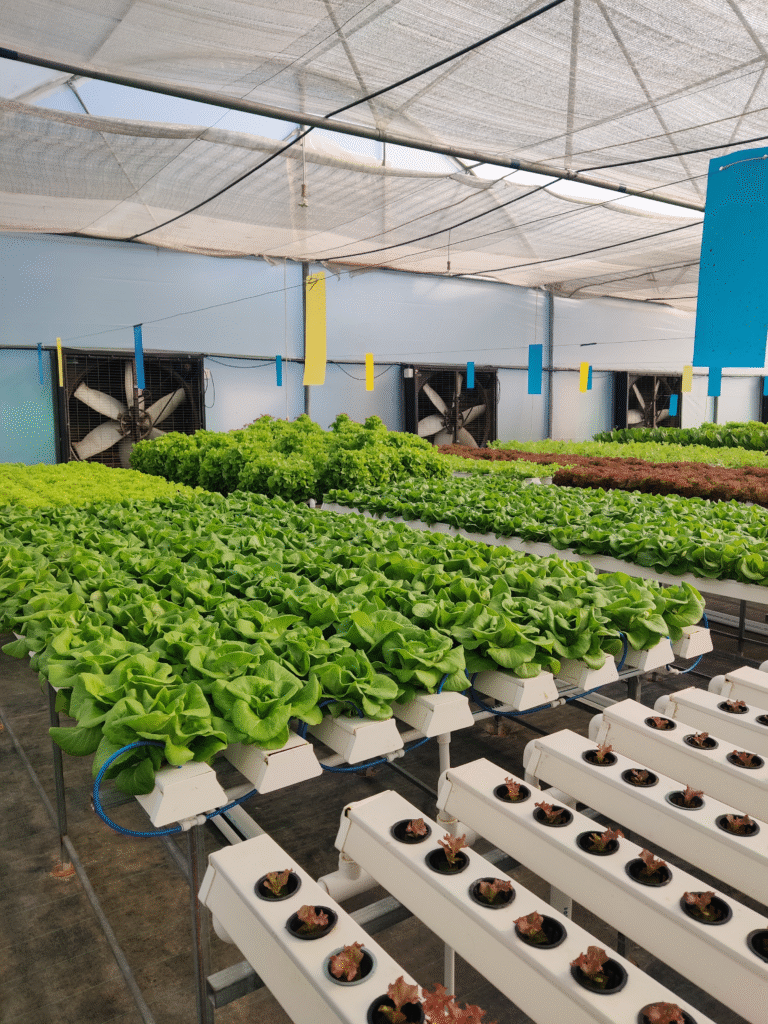
This digital integration aligns with India’s Digital Agriculture Mission and AgriStack infrastructure, creating synergies between private sector innovation and public sector digital platforms. The integration enables farmers to access satellite-based weather advisories, market information, and technical support through unified digital interfaces.
Blockchain technology is being explored for supply chain transparency and traceability, enabling Unnati’s produce to meet international export standards and command premium prices in global markets. This technological sophistication transforms Indian hydroponic produce from local agricultural products to globally competitive commodities.
Partnerships as Growth Drivers: Scaling Through Collaboration
With alliances like Anand Agricultural University and IFFCO, you’re building strong institutional linkages. What role do you see public–private partnerships playing in scaling hydroponics nationwide, and how do you plan to integrate smallholder farmers into this high-tech ecosystem?
Brio Hydroponics’ partnerships with Anand Agricultural University, IFFCO, and other institutions represent a strategic approach to scaling hydroponics technology across India’s agricultural landscape. These partnerships provide multiple benefits: research and development capabilities, institutional credibility, access to farmer networks, and policy influence that facilitates technology adoption at scale.
The collaboration with Anand Agricultural University, located in Gujarat’s agricultural heartland, provides research expertise in crop sciences, soil health, and agricultural engineering. This partnership enables the development of region-specific hydroponic solutions that address local crop preferences, growing conditions, and farmer requirements. University research facilities support ongoing innovation in nutrient formulations, crop varieties, and system optimization.
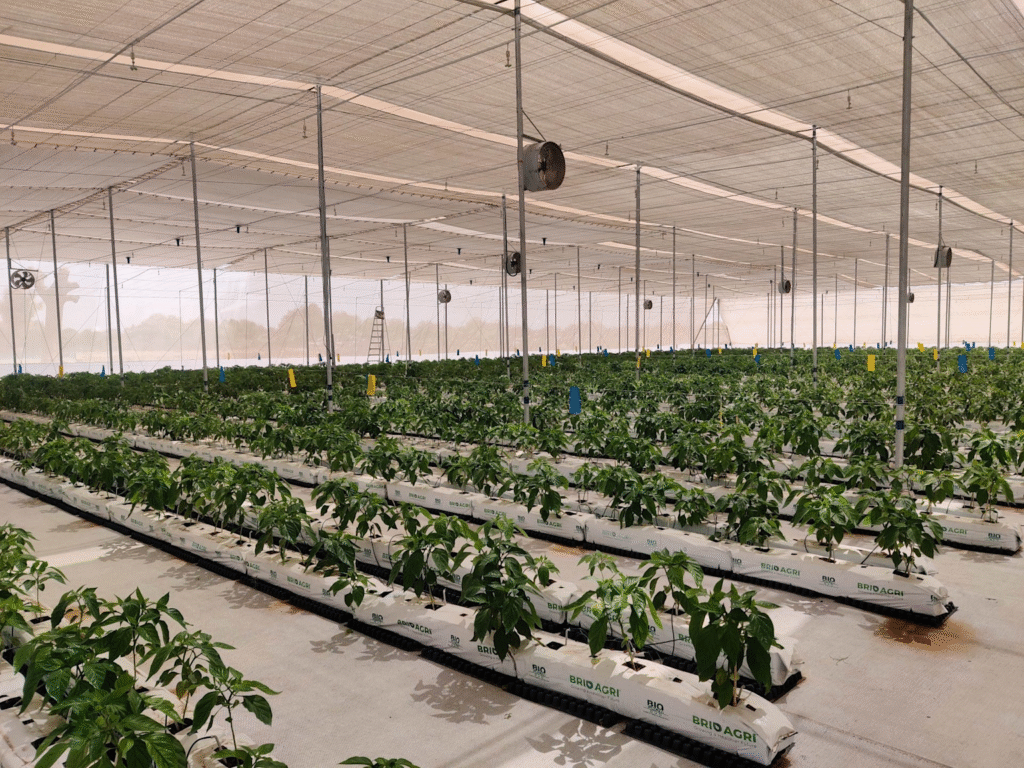
IFFCO’s involvement brings significant advantages in terms of farmer outreach, input supply chains, and cooperative structure expertise. As one of India’s largest fertilizer cooperatives, IFFCO has extensive networks reaching millions of farmers across the country. This partnership enables Brio to leverage existing distribution channels, farmer relationships, and cooperative structures to introduce hydroponic technologies at grassroots levels.
Public-Private Partnership Model
The public-private partnership approach adopted by Brio creates synergies between government policy objectives and private sector innovation capabilities. Government initiatives like the National Horticulture Mission, Pradhan Mantri Krishi Sinchai Yojana, and subsidies for controlled environment agriculture provide policy support and financial incentives that reduce adoption barriers.
These partnerships enable Brio to participate in government programs that provide technical assistance, financial subsidies, and market linkages to farmers adopting advanced agricultural technologies. The alignment with national agricultural policies ensures that Brio’s expansion strategy supports broader government objectives of agricultural modernization, water conservation, and climate resilience.
The integration with India’s Digital Agriculture Mission creates opportunities for Brio’s technologies to be incorporated into national digital infrastructure for agriculture. This integration can provide farmers with access to hydroponic technologies through existing government platforms, reducing the complexity and cost of technology adoption.
Smallholder Integration Strategy
Integrating smallholder farmers into high-tech hydroponic ecosystems requires careful attention to economic constraints, technical capabilities, and risk management preferences. Brio’s approach involves multiple strategies designed to make advanced technologies accessible to resource-constrained farmers:
Modular Technology Design: Hydroponic systems are designed in modular units that allow farmers to start with small installations and expand gradually. This approach reduces initial capital requirements while enabling farmers to gain experience and build confidence with the technology.
Training and Capacity Building: Comprehensive training programs provide farmers with technical skills required for hydroponic operations. Brio’s Training & Placement Assistance program offers two-week intensive training followed by ongoing technical support, ensuring farmers have the knowledge needed for successful operations.
Financial Support and Risk Sharing: The fintech investment platform and agri-partnership models provide alternative financing mechanisms that reduce financial risks for smallholder farmers. Investors can provide capital while farmers contribute land and labor, sharing both risks and returns.
Cooperative Integration: Working with existing farmer producer organizations (FPOs) and cooperative structures enables smallholder farmers to access hydroponic technologies collectively, sharing costs and risks while maintaining individual farming operations.
Technology Transfer and Knowledge Dissemination
Brio’s partnership strategy includes significant emphasis on knowledge transfer and skill development. The Center of Excellence in Gandhinagar has trained over 500 agripreneurs, creating a network of skilled practitioners who can support technology diffusion across agricultural communities.
This knowledge dissemination approach creates multiplier effects, where trained farmers become technology advocates and informal advisors for their communities. The demonstration effect of successful hydroponic operations encourages broader adoption while providing peer-to-peer learning opportunities that are often more effective than formal training programs.
The partnerships also facilitate technology standardization and quality assurance, ensuring that hydroponic systems deployed across different regions maintain consistent performance standards. This standardization is crucial for scaling technology adoption while maintaining quality and economic viability.
Beyond Gujarat: National and Global Expansion Strategy
With Unnati now underway, what’s your national and global expansion strategy? Do you envision replicating this park model across states—or building smaller modular units that could integrate into farmer clusters?
Brio Hydroponics’ expansion strategy beyond Gujarat involves both replicating the large-scale park model and developing smaller, modular units that can integrate into existing farmer clusters. The success of Unnati’s initial 30 acres under cultivation provides a proven template that can be adapted to different geographic and economic contexts across India.
The company has already acquired land for expansion projects, including 36 acres near Mumbai with potential scaling to 60 acres, demonstrating commitment to geographic diversification. This expansion strategy focuses on proximity to major urban centers where demand for premium, pesticide-free produce is highest and supply chain logistics can be optimized.
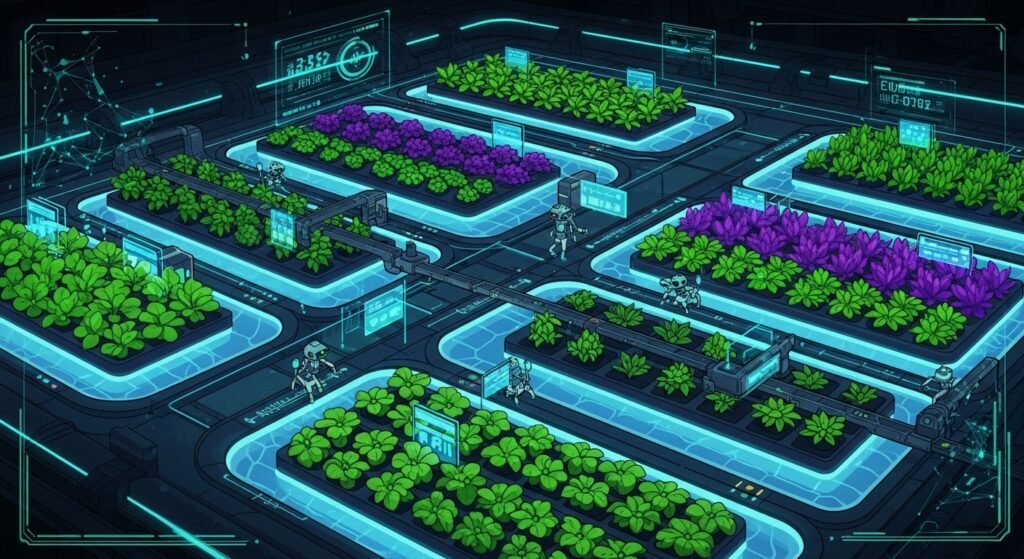
The expansion approach recognizes that different regions have varying requirements based on climate conditions, water availability, crop preferences, and market dynamics. Rather than implementing identical systems, Brio adapts its core CEA technology platform to local conditions while maintaining standardized operational procedures and quality standards.
Modular Integration Strategy
Beyond large-scale parks, Brio is developing smaller modular units designed to integrate into existing farmer clusters and cooperative structures. This approach addresses the reality that most Indian farmers operate small plots and may not have the capital or inclination to participate in large-scale commercial operations.
Modular systems can be deployed at village levels, serving clusters of 10-20 farmers who collectively invest in hydroponic infrastructure while maintaining individual farming operations. This approach leverages existing social structures and cooperative traditions while introducing advanced agricultural technologies.
The modular approach also enables faster deployment and lower per-unit capital requirements, making hydroponic technology accessible to a broader range of farmers and geographic locations. Standardized modules can be manufactured centrally and assembled locally, reducing costs and complexity while maintaining quality standards.
International Expansion and Export Focus
Brio’s international expansion strategy includes both technology export and produce export components. The company has already established operations in the Maldives and is finalizing projects in Mauritius and the Caribbean islands. This international expansion leverages India’s growing reputation in agricultural technology and Brio’s proven expertise in tropical and subtropical growing conditions.
The export strategy focuses on regions where water scarcity, limited arable land, or challenging growing conditions make hydroponic systems particularly valuable. Small island nations, desert regions, and urban areas in developing countries represent priority markets where Brio’s technologies can address critical food security challenges.
International expansion also creates opportunities for technology transfer partnerships with foreign governments and development organizations. Brio’s experience in adapting global technologies to local conditions positions the company as a valuable partner for agricultural development projects in emerging markets.
Digital Platform and Franchise Model
The expansion strategy includes development of digital platforms that enable remote monitoring, technical support, and market linkages for distributed hydroponic operations. These platforms can support franchise-style expansion where local entrepreneurs operate hydroponic systems under Brio’s technical guidance and quality standards.
Digital platforms enable centralized monitoring of multiple sites, standardized operating procedures, and quality assurance systems that maintain brand consistency across geographic locations. Remote monitoring capabilities reduce the need for physical presence while ensuring optimal system performance.

The franchise model creates opportunities for local entrepreneurship while maintaining technical standards and market access. Local operators benefit from Brio’s proven systems, training programs, and market linkages while adapting operations to local conditions and preferences.
The 2035 Vision: India’s Model for Climate-Smart Agriculture
If we project a decade ahead, what does success for Brio Hydroponics look like? Is it thousands of acres of soil-less farming, a farmer-first export powerhouse, or becoming India’s model for climate-smart agriculture?
By 2035, Brio Hydroponics envisions a transformational impact on India’s agricultural landscape that extends far beyond the current scale of operations. The company’s vision encompasses three interconnected dimensions: massive scaling of soil-less farming infrastructure, establishment of India as a farmer-first export powerhouse, and creation of a replicable model for climate-smart agriculture that can be deployed globally.
The scaling vision projects thousands of acres under hydroponic cultivation across multiple states, supported by a network of technology centers, training facilities, and processing hubs. This infrastructure would serve both commercial operations and smallholder farmers, creating an integrated ecosystem that supports diverse scales and types of agricultural operations.
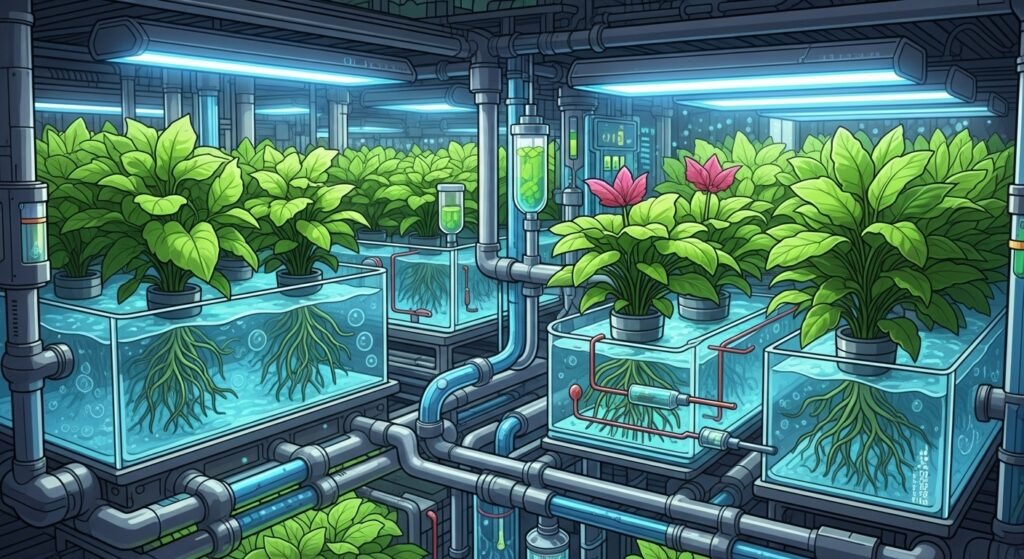
Market projections support this ambitious vision, with India’s hydroponics market expected to reach $ 2,227 million by 2035, representing a 21.43 per cent compound annual growth rate. This explosive growth trajectory indicates that hydroponics will transition from niche technology to mainstream agricultural practice, driven by water scarcity, climate change, and increasing demand for premium produce.
Farmer-First Export Powerhouse Model
The 2035 vision positions India as a global leader in hydroponic produce exports, with farmer prosperity at the center of the value chain. This farmer-first approach ensures that technology advancement translates into improved livelihoods for agricultural communities rather than simply benefiting large corporate operations.
The export powerhouse model leverages India’s competitive advantages in agricultural innovation, skilled technical workforce, and growing expertise in controlled environment agriculture. By 2035, Brio envisions Indian hydroponic produces competing successfully in premium international markets, commanding prices that reflect superior quality, traceability, and sustainable production methods.
This export focus requires significant investment in post-harvest infrastructure, cold chain logistics, and quality certification systems. The integration of blockchain technology for supply chain transparency and adherence to international organic and sustainability standards will enable Indian hydroponic produce to access the highest-value global markets.
Climate-Smart Agriculture Leadership
The broader vision positions India as a global model for climate-smart agriculture that other developing countries can emulate. This leadership role involves several components: technology innovation, policy framework development, institutional capacity building, and international cooperation.
India’s experience in adapting global hydroponic technologies to local conditions, integrating smallholder farmers into high-tech systems, and scaling sustainable agriculture practices provides valuable lessons for other developing countries facing similar challenges. The knowledge and systems developed through projects like Unnati can be transferred to other regions through technical cooperation programs and development partnerships.
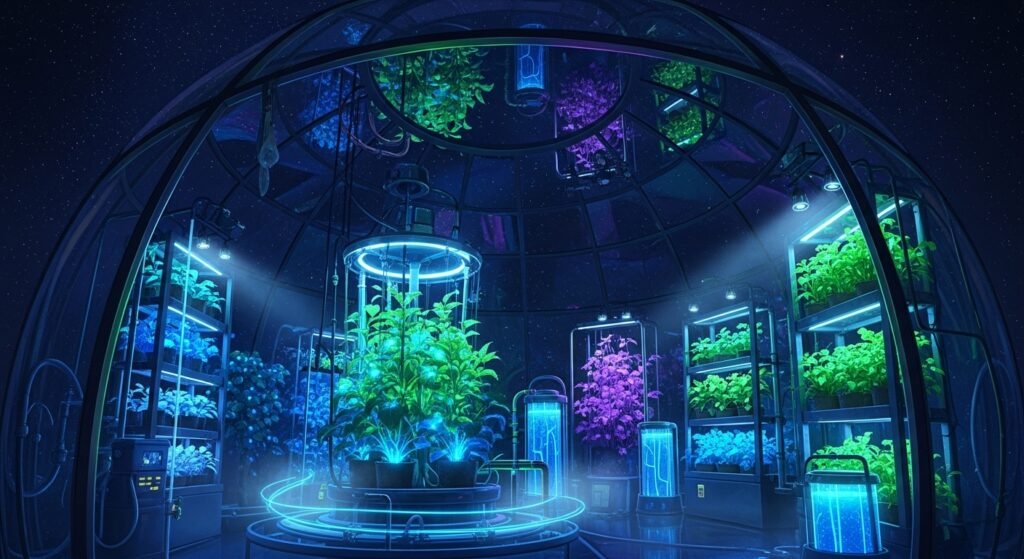
The climate-smart agriculture model emphasizes three key outcomes:
Productivity Enhancement: Hydroponic systems consistently deliver higher yields per unit area while using fewer resources, contributing to food security without expanding agricultural land use.
Climate Resilience: Controlled environment agriculture systems eliminate weather-related risks and enable consistent production despite increasing climate variability.
Environmental Sustainability: Reduced water usage, elimination of soil degradation, and minimized chemical inputs create agricultural systems that support rather than degrade environmental health.
Technology Integration and Digital Agriculture
The 2035 vision includes comprehensive integration of hydroponic systems with India’s digital agriculture infrastructure, creating seamless connectivity between controlled environment agriculture and broader agricultural support systems. This integration enables farmers to access weather advisories, market information, technical support, and financial services through unified digital platforms.
Artificial intelligence and machine learning systems will optimize hydroponic operations by analyzing vast datasets on plant growth, environmental conditions, and market demand to make real-time adjustments that maximize productivity and profitability. These systems will enable predictive management that anticipates and prevents problems before they impact crop production.
The digital integration also enables new forms of agricultural finance and insurance that are specifically designed for controlled environment agriculture. Satellite monitoring, IoT sensors, and blockchain verification can provide the data transparency needed for innovative financial products that reduce risks for both farmers and lenders.
Institutional and Policy Framework
Achieving the 2035 vision requires supportive institutional and policy frameworks that encourage innovation, facilitate technology adoption, and ensure that benefits reach smallholder farmers. Brio’s partnerships with agricultural universities, government agencies, and international organizations create a foundation for policy advocacy and institutional development.
The vision includes establishment of specialized training institutions, research centers, and extension services focused on controlled environment agriculture. These institutions would provide the technical expertise, research capabilities, and farmer support services needed to sustain rapid expansion of hydroponic systems across India.
Policy frameworks need to address regulatory standards for hydroponic produce, quality certification systems, and trade policies that facilitate exports. The integration of hydroponics into existing agricultural support programs, including subsidies, insurance, and market linkages, will ensure that the technology remains accessible to farmers of all scales.
A New Era of Agricultural Innovation
Brio Hydroponics’ Unnati project represents more than an agricultural venture; it embodies a comprehensive transformation of how India approaches food production, climate resilience, and rural prosperity. Through the strategic deployment of controlled environment agriculture at unprecedented scale, Brio is creating a replicable model that addresses India’s most pressing agricultural challenges while establishing pathways for global leadership in sustainable farming technologies.
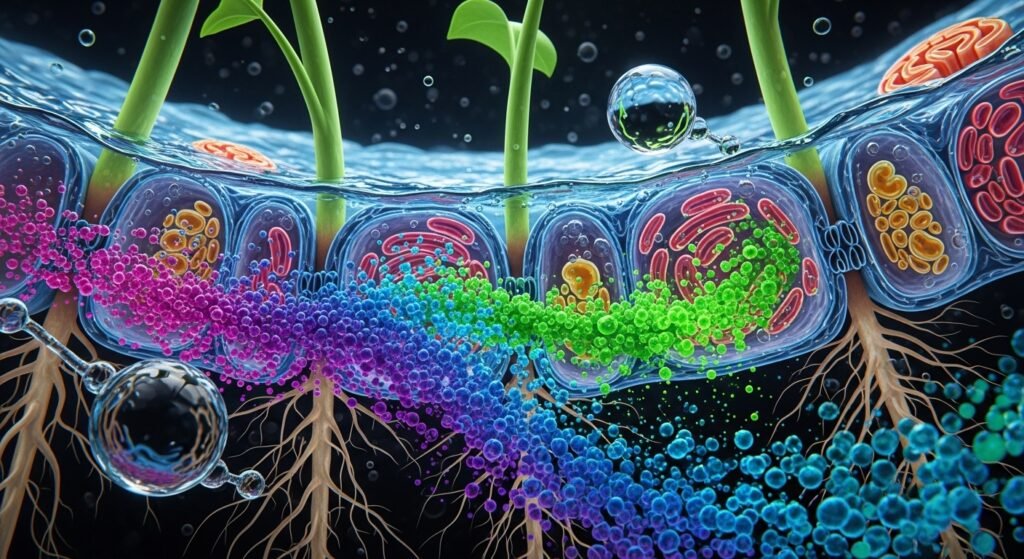
The answers to these critical questions reveal that hydroponics in India is transitioning from experimental technology to mainstream agricultural practice, driven by necessity, opportunity, and visionary leadership. The success of Unnati and similar projects will determine whether India can achieve its vision of climate-smart, sustainable agriculture that serves both farmers and consumers while protecting environmental resources for future generations.
The convergence of technological innovation, strategic partnerships, supportive policies, and market demand creates unprecedented opportunities for transforming Indian agriculture. Brio Hydroponics’ leadership in this transformation positions the company—and India—at the forefront of a global agricultural revolution that promises to redefine how the world produces food in an era of climate change and resource scarcity.
— Suchetana Choudhury (suchetana.choudhuri@agrospectrumindia.com)